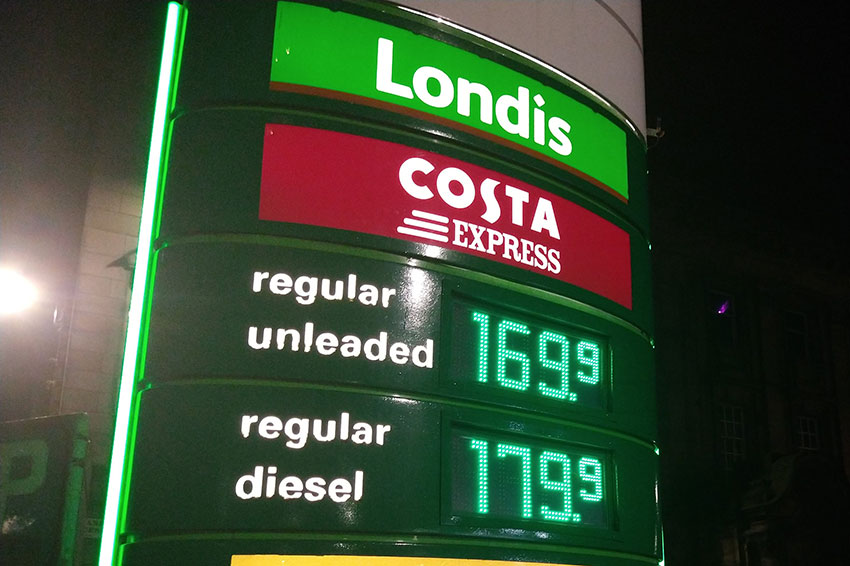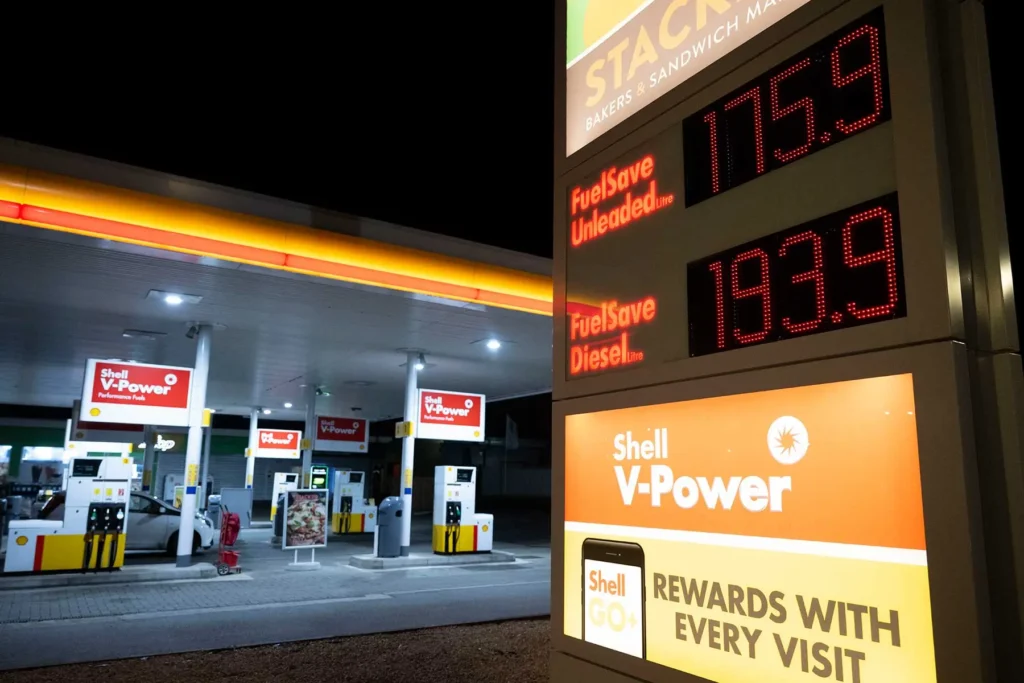Petrol prices are a critical component of the global economy, influencing everything from transportation costs to consumer spending. The fluctuation of these prices can have far-reaching consequences, impacting industries, governments, and everyday citizens alike. In recent years, petrol prices have been subject to significant volatility due to a combination of geopolitical tensions, supply chain disruptions, and economic policies. This article explores the recent trends in petrol prices, analyzing the factors contributing to these fluctuations and their implications for various stakeholders.
The Global Landscape of Petrol Prices

Petrol, or gasoline, is a refined product derived from crude oil, and its price is closely tied to the global oil market. Crude oil prices are influenced by a variety of factors, including production levels set by major oil-producing countries, geopolitical events, natural disasters, and changes in global demand. As such, petrol prices are inherently volatile and can vary significantly from one region to another.
In 2023 and 2024, the world has witnessed a rollercoaster of petrol prices. Several key events have shaped the current landscape, making it a complex and dynamic market to navigate.
Geopolitical Tensions and Supply Disruptions
One of the primary drivers of recent petrol price fluctuations has been geopolitical tensions, particularly in oil-producing regions. Conflicts, sanctions, and political instability in the Middle East, which remains a major hub for oil production, have had a direct impact on the availability of crude oil. For example, ongoing tensions between major powers and countries like Iran have led to uncertainty in oil supplies, causing prices to spike.
Additionally, supply chain disruptions caused by natural disasters or technical issues at refineries have also contributed to price volatility. For instance, hurricanes in the Gulf of Mexico, where a significant portion of the U.S. oil refining capacity is located, have temporarily reduced the availability of petrol, leading to price increases.
The Role of OPEC+ and Oil Production Levels
The Organization of the Petroleum Exporting Countries (OPEC) and its allies, collectively known as OPEC+, play a crucial role in determining global oil prices. By adjusting their production levels, OPEC+ can influence the supply of crude oil in the market, thereby affecting petrol prices.
In recent years, OPEC+ has been navigating a delicate balance between maintaining high oil prices to support the economies of member countries and avoiding excessively high prices that could dampen global demand. Throughout 2023 and into 2024, OPEC+ has implemented various production cuts to stabilize prices amid fluctuations in demand due to economic uncertainties.
These production cuts, while effective in supporting crude oil prices, have also led to higher petrol prices in many parts of the world. The reduced supply, coupled with rising demand as economies recover from the pandemic, has put upward pressure on petrol prices, creating challenges for consumers and businesses alike.
The Impact of Economic Policies and Inflation

Economic policies, particularly those related to monetary policy and inflation, have also played a significant role in shaping recent petrol prices. As countries grapple with inflationary pressures, central banks have responded by raising interest rates. These rate hikes have led to a stronger U.S. dollar, which in turn affects global oil prices, as oil is typically traded in dollars.
A stronger dollar makes oil more expensive for countries that use other currencies, leading to higher petrol prices in those regions. Additionally, inflationary pressures have increased the cost of refining and distributing petrol, further contributing to higher prices at the pump.
In response to rising petrol prices, some governments have introduced subsidies or reduced taxes to alleviate the burden on consumers. However, these measures are often temporary and may not fully offset the overall increase in costs.
The Influence of Global Demand and Economic Recovery
Global demand for petrol has been another significant factor influencing prices. As the world emerges from the COVID-19 pandemic, economic recovery has driven an increase in demand for energy, including petrol. This surge in demand has been particularly pronounced in countries where economic growth has rebounded strongly.
However, the recovery has been uneven, with some regions experiencing slower growth or ongoing economic challenges. This uneven recovery has led to disparities in petrol prices across different countries. For example, in regions where economic recovery is robust, higher demand has led to increased prices, while in areas with weaker economic activity, prices have remained relatively stable.
The ongoing shift towards renewable energy and electric vehicles has also influenced petrol demand. While the transition to cleaner energy sources is still in its early stages, it has begun to impact long-term demand projections for petrol, creating uncertainty in the market.
The Environmental and Social Implications
The recent fluctuations in petrol prices have also highlighted the environmental and social implications of reliance on fossil fuels. High petrol prices have renewed calls for investment in alternative energy sources and greater energy efficiency. Governments and industries are increasingly recognizing the need to transition to more sustainable forms of energy to reduce carbon emissions and mitigate the impacts of climate change.
Moreover, the social implications of rising petrol prices are significant. For many households, particularly those in lower-income brackets, higher petrol prices can strain budgets and reduce disposable income. This can lead to difficult choices between fueling vehicles and meeting other essential needs. The increased cost of transportation also affects the price of goods and services, contributing to overall inflation and reducing purchasing power.
The Regional Differences in Petrol Prices

Petrol prices vary significantly across different regions, reflecting local market conditions, tax policies, and levels of demand. In the United States, for example, petrol prices have been affected by domestic production levels, state taxes, and seasonal demand fluctuations. In Europe, higher taxes on fuel and greater reliance on imported oil have led to consistently higher petrol prices compared to other regions.
In developing countries, petrol prices are often influenced by government subsidies and price controls. These measures are designed to protect consumers from volatile market conditions, but they can also lead to economic inefficiencies and strain government budgets.
The disparity in petrol prices across regions has led to different consumer behaviors and attitudes towards fuel consumption. In regions with higher prices, there is often greater emphasis on fuel efficiency and the adoption of alternative energy sources. In contrast, in areas with lower prices, there may be less urgency to transition away from fossil fuels.
The Outlook for Petrol Prices in 2024 and Beyond
Looking ahead, the outlook for petrol prices remains uncertain. Several factors will likely continue to influence prices, including geopolitical developments, OPEC+ production decisions, global economic trends, and the ongoing transition to renewable energy.
In the short term, petrol prices may remain elevated due to continued supply constraints and robust demand. However, as the world moves towards a more sustainable energy future, the long-term demand for petrol may decline, potentially leading to more stable prices.
The transition to electric vehicles (EVs) is expected to play a significant fiatogel role in shaping future petrol demand. As more consumers and businesses adopt EVs, the reliance on petrol will decrease, reducing demand and potentially leading to lower prices. However, this transition will take time, and petrol is likely to remain a critical component of the global energy mix for the foreseeable future.
Conclusion
The recent trends in petrol prices underscore the complex and interconnected nature of the global energy market. Geopolitical tensions, economic policies, supply disruptions, and shifting demand all play a role in determining the price of petrol. These fluctuations have significant implications for consumers, businesses, and governments, affecting everything from household budgets to economic growth.
As the world continues to navigate these challenges, the importance of diversifying energy sources and investing in sustainable alternatives becomes increasingly clear. While petrol will remain a key part of the energy landscape for now, the future is likely to see a gradual shift towards cleaner and more efficient forms of energy, shaping the dynamics of the global energy market for years to come.
Read More Article About “Angel Salazar: Multifaceted Talent Comedy and Entertainment“

